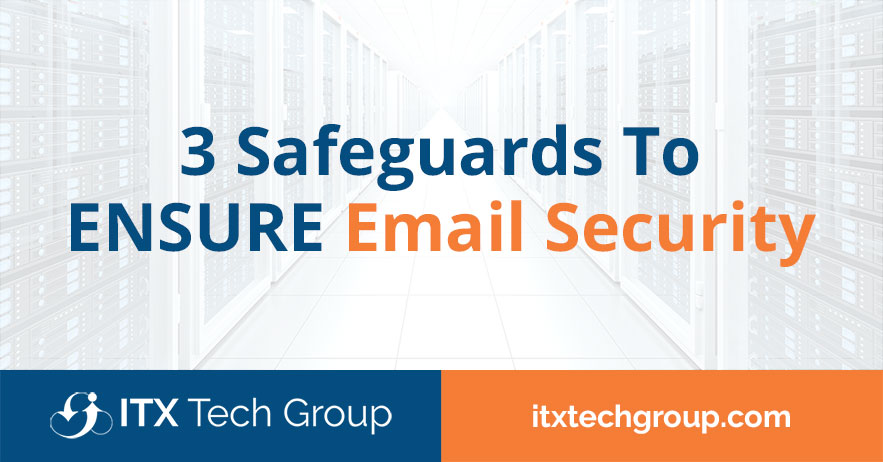In today’s interconnected world, email has become an indispensable tool for communication, both in personal and professional spheres. However, the convenience of email also brings along with it a range of security challenges.
From phishing attacks to malware-infected attachments, the potential threats to email security are numerous. To safeguard sensitive information and maintain the confidentiality of your communications, it is crucial to implement robust email security measures.
In this article, we will explore three essential safeguards that can help ensure email security.
1. Strong Authentication and Access Controls
The foundation of email security lies in ensuring that only authorized individuals have access to the email accounts. Strong authentication methods are essential to prevent unauthorized access and potential breaches.
Here are some key steps to implement strong authentication and access controls:
a. Multi-Factor Authentication (MFA): MFA adds an extra layer of security by requiring users to provide two or more verification factors before accessing an email account. These factors typically include something the user knows (password), something the user has (smartphone or hardware token), and something the user is (biometric data). This makes it significantly more difficult for unauthorized individuals to gain access, even if they manage to obtain the password.
b. Role-Based Access Control (RBAC): In a business or organizational context, RBAC ensures that users only have access to the specific parts of the email system that are relevant to their roles. This prevents unauthorized users from gaining access to sensitive information. For example, an employee in the finance department might not need access to the marketing team’s email discussions.
c. Regular Access Reviews: Periodically review and audit user access to email accounts. This ensures that access privileges are up-to-date and removes access for users who no longer require it. Additionally, it helps identify and rectify any unauthorized access attempts promptly.
2. Robust Email Encryption
Emails often contain sensitive and confidential information, making encryption a crucial aspect of email security. Encryption ensures that even if intercepted, the content of the email remains unreadable without the appropriate decryption key.
There are two primary types of email encryption to consider:
a. Transport Layer Security (TLS): TLS encryption secures the communication channel between email servers, ensuring that the email content is protected while in transit. It is essential to configure email servers to use TLS whenever possible, especially when sending or receiving emails containing sensitive information.
b. End-to-End Encryption: End-to-end encryption ensures that only the intended recipient can decrypt and read the email. Even if the email service provider is compromised, the content remains secure. Encourage the use of email clients and services that support end-to-end encryption, such as PGP (Pretty Good Privacy) or S/MIME (Secure/Multipurpose Internet Mail Extensions).
3. Comprehensive Email Filtering and Training
A significant portion of email-related security breaches stem from phishing attacks and malware-infected attachments. It is crucial to implement strong email filtering and provide training to users to recognize and mitigate these threats effectively:
a. Advanced Threat Protection (ATP): ATP solutions use sophisticated algorithms to detect and block phishing emails, malicious attachments, and links to malicious websites. These solutions can analyze email content, sender reputation, and user behavior to identify potential threats.
b. User Training and Awareness: Educating users about email security best practices is an essential aspect of email security. Conduct regular training sessions to help users recognize common phishing tactics, suspicious email content, and the importance of verifying sender information before clicking on links or downloading attachments.
c. Spam Filters and Content Filtering: Implement robust spam filters to reduce the likelihood of spam and phishing emails reaching users’ inboxes. Content filtering can identify and block emails containing sensitive information, ensuring that inadvertent data leaks are minimized.
Conclusion
Email security is a paramount concern in today’s digital landscape. By implementing strong authentication and access controls, robust email encryption, and comprehensive filtering and training, individuals and organizations can significantly enhance their email security posture.
The safeguards discussed in this article provide a solid foundation for protecting sensitive information, maintaining privacy, and thwarting potential cyber threats.
As the email landscape continues to evolve, staying proactive and informed about the latest security measures is crucial to ensure the safety of your communications.
ITX Tech Group has been serving small, medium, and large scale businesses with their IT support needs all over the United States since 2011, so we’re confident we can provide you with affordable, professional IT solutions for years to come!
Connect with us for a free consultation to discuss your business technology needs.

